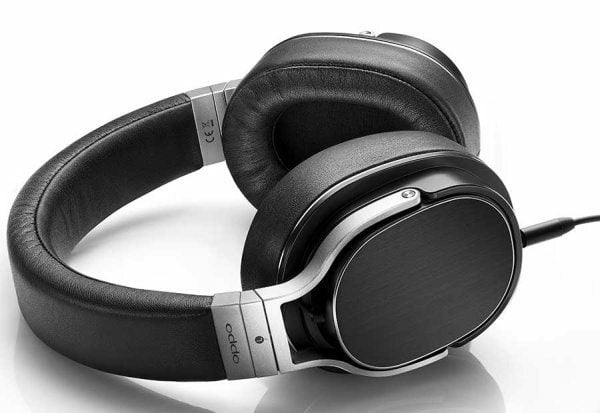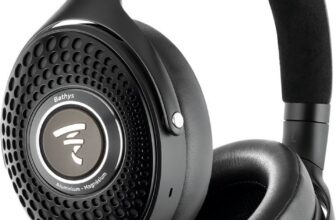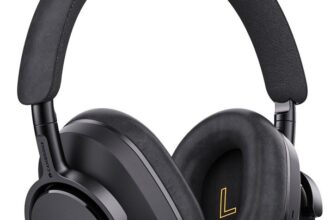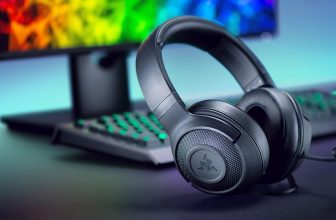Oppo PM-3


Oppo has already impressed the high-end sector. Now, high-tech meets the high street as David Vivian tests its latest headphone
At the height of his boxing powers, Muhammad Ali would often quip: “How can I lose with the stuff I use?”. Oppo’s plan to sink its rivals is obviously built along similar lines, but in the fiercely fought £ headphone market, that’s going to require more than a fast-foot shuffle.
The stuff Oppo uses is a meticulously developed implementation of the planar magnetic driver technology that’s normally the preserve of some very fancy cans indeed. When Oppo launched its own flagship show-opener last year, the PM-1, no one was greatly surprised that such a large, luxurious open-back design, intended purely for home use, eschewed conventional dynamic cones for planar drivers. A few months later, Oppo pulled off the same trick with the considerably more affordable PM-2, sacrificing little of the sonic performance that had set a benchmark at the £ price point.The PM-3, however, has really set Felix among the featherweights. More compact and with over-ear closed-back swivel-able cups, it’s Oppo’s stab at a portable design – an audacious fusion of trickle-down planar magnetic tech and high-street wearability at a price that must be leaving some serious rival brands dazed and others founded on celebrity endorsement blithely unconcerned.Portable headphones with planar drivers are rare enough, but Oppo says the PM-3 sets the bar for weight. At 320g, it’s only slightly heavier than a regular quality pair of headphones with less magnet-reliant dynamic drivers. On-the-go ease of drive, previously a problem for this typically powerhungry type of headphone, is another game-changer, making the PM-3 ideal for use with a smartphone or, better still, a smartphone and pocketable headphone amp/DAC such as Oppo’s own HA-2 (HFC 397). Oppo admits getting this right was a tough call and took around a year to crack.Why all the fuss about planar magnetic drivers? That’s simple: sound quality. Manufacturers such as Oppo, Audeze and Hifi man wouldn’t go to all the trouble if it wasn’t for the sonic pay off. Loudspeaker legend Magnepan pioneered the technology which, in the simplest terms, consists of conductive membrane diaphragms flanked by grids of powerful magnets that attract and repel the ultra-thin and light film diaphragms in response to a signal.Oppo’s contention is that planar magnetic technology offers the best overall solution for the majority of customers who demand high-quality and high-resolution sound, possessing many advantages over traditional dynamic driver technology, not least inherently lower distortion. It’s something they share this with all film-based transducers, but planar magnetic drivers add the benefit of being potentially portable as, unlike electrostatic designs, they don’t require a special desktop bias power supply and amplifier. Electrostatics arguably hold the upper hand when it comes to ultimate sound quality at home, but planar magnetic technology has practical benefits that offers more to a wider public and, therefore, a much better return on your investment.Headphone aficionados will probably be able to recognise PM-3s (available in black or white) on the street but, unlike some, these aren’t cans that broadcast their identity. Classy, neat and not too bulky best sums up the look which, I suspect, will suit most just fine. There are some nice touches such as the brushed aluminium panels on the cups and the well-upholstered leather-look earpads and headband padding. Yes, leather-look. The PM-3 is clearly built to a price. The good news is that most of the budget has been spent where it really counts, under the bonnet, and what build compromises there are – the plastic main frame and faux-leather earpads – are perfectly comfortable and serviceable. As befits the PM-3’s portable/versatile design, you get four plug-in cables: a generous 3m length with a 3.5mm plug and 6.35mm adapter, a pair of 1.2m cables with remote buttons for iPhone or Android and a plain one with no remote at all.Portability also requires a good degree of isolation and, short of opting for a noise-cancelling design, the PM-3 is about as good as it gets at keeping the hubbub of the outside world at bay and the finer details of the music close and intimate. Snugly fitting earpads and good isolation also prevent the need to trowel on the bass too thickly to mask any ambient noise that’s leaking through. Even so, the bass output is elevated 5-6dB from a nominally fl at frequency response to achieve a subjectively ‘neutral’ balance on the move. There’s some subtle ‘tuning’ at the top end, too, in order to avoid excessive hardness and sibilance with less than perfectly produced tunes.The PM-3’s ‘house’ sound is one of which Goldilocks herself would approve: just right. Transparent enough to easily differentiate between the sonic efforts of an iPhone or Samsung Galaxy aunaturel and variously upgraded with the Oppo HA-2 amp/DAC or Chord Hugo (HFC 386), the thing that sticks out about the PM-3 is the way everything sounds so natural, unshowy and unforced. No bass bloat, no mid muddle, no treble tinsel – just delicious weight and detail, nicely in proportion, convincingly imaged in three dimensions without falling into the trap, as some headphones do, of sounding suspiciously airy and expansive. It creates a sense of ease that kills fatigue and reduces curiosity about how much better really pricey headphones would sound.Do I crave for more analysis listening to the baby Oppos? Not really. With a hi-res feed, not at all. The detail’s all there but never seems overt or spotlit, just lucid and uninhibited. Musical complexities aren’t ‘diffi cult’, timing is right on the money, especially with the Chord Hugo in the loop. Steely Dan’s Aja – in truth, not the duo’s most glittering studio triumph even in digitally re-mastered form – sounds satisfyingly vivid, dynamic and muscular. Immersed in the music, I don’t feel inclined to focus on its hi-fi inadequacies. The PM-3 has the happy knack of heading straight for the musical heart of the material. If its overall balance is a little more relaxed than that of some rivals, it certainly doesn’t stop it conveying presence and vitality to the full.Sometimes manipulative smoothness and warmth can be mistaken for naturalness, but there’s no euphonic buttering up here. Maybe it’s not quite the ideal headphone for hardcore headbangers, but pump up the volume and excitement most definitely gets out of bed. The forceful, up-front sound on Rave Un2 The Joy Fantastic from Prince sounds exceptionally solid and rhythmic with whip-crack transients and outstandingly explicit vocals. Contrastingly, a delicate touch is apparent with classical music. Dvorak isn’t generally noted for his jaunty tempos and the Oppos show great respect, finesse and a sense of performance with the slower pace and orchestral sensibilities. String tone has a particularly natural and unforced quality – smooth and nicely integrated with just the right amount of body.So, to recap, Oppo’s gorgeous PM-3 headphones are ‘entry-level’ in name only. No, they don’t sound quite as polished and detailed as their larger and more expensive open-back PM-1 and PM-2 siblings. But they do share a cut-down version of those models’ planar magnetic drivers and so biff much of the similarly priced portable competition into the middle of next week. That they are also well made, look smartly understated and remain comfortable to wear seals them an enthusiastic recommendation.? Over-ear, closed back headphone? 55mm planar magnetic drivers





